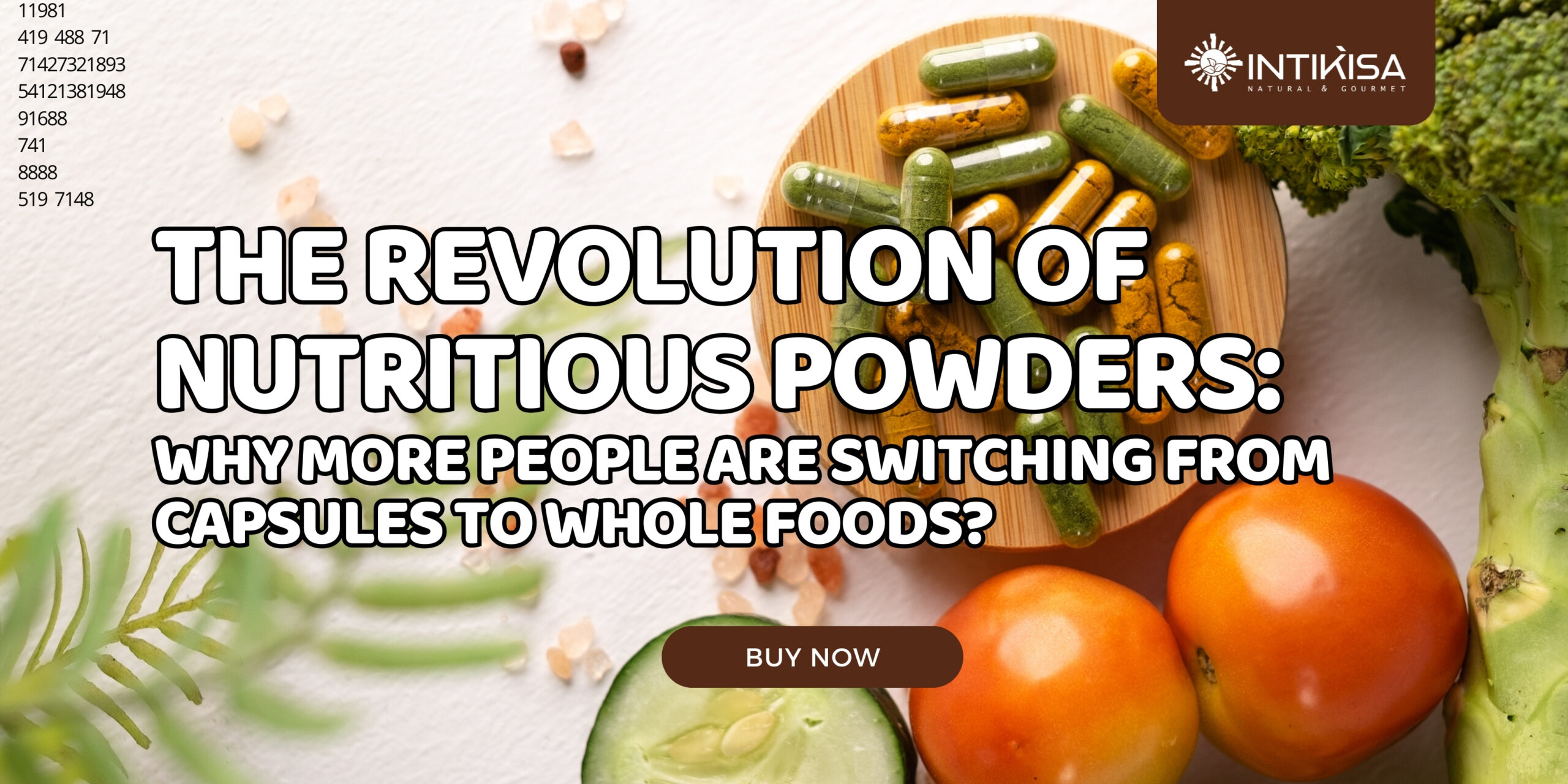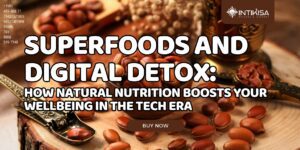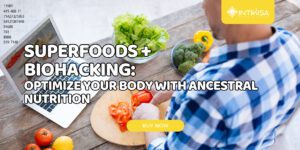In recent years, the health and wellness market has undergone a quiet but powerful transformation. What used to be considered the ultimate symbol of health—a shiny capsule with a technical label—is now losing ground to something simpler and more ancestral: superfoods in powder form.
More and more consumers are choosing to replace synthetic supplements with natural, whole, and ancestral foods. This shift is no coincidence—it reflects a growing demand for real wellness, transparency, and holistic nutrition.
- Capsules vs. Superfoods: Two Different Worlds
At first glance, a capsule and a spoonful of powder may seem to serve the same purpose: delivering nutrients. However, the real difference lies in how the body processes and absorbs those nutrients.
- Capsule Supplements
- Usually contain isolated nutrients (e.g., pure vitamin C or iron in sulfate form).
- Require fillers, binders, and coatings that don’t provide nutritional value.
- Deliver a precise dose, but often fail to replicate the natural interaction of nutrients found in food.
- Superfoods in Powder Form
- Made from whole foods that are dehydrated and ground, retaining vitamins, minerals, antioxidants, proteins, and fiber.
- No added chemicals—what you see is what you eat.
- Offer natural synergy: for example, the iron in quinoa is better absorbed thanks to the vitamin C naturally present in the plant.
A study published in the Journal of Food Science and Technology (2019) shows that the whole food matrix—the natural way nutrients occur together in food—improves absorption and effectiveness compared to isolated nutrients.
- Bioavailability: The Real Measure of Nutrition
It doesn’t matter how much a supplement promises on its label if the body can’t absorb it. This is where bioavailability comes in—the proportion of a nutrient that actually reaches your cells.
- In Synthetic Capsules:
- Isolated vitamin C, for instance, can degrade quickly and lose effectiveness without accompanying bioflavonoids.
- Iron in ferrous sulfate often causes digestive discomfort and has limited absorption unless taken with vitamin C (Harvard T.H. Chan School of Public Health, 2021).
- In Superfoods:
- Camu Camu, one of the richest sources of vitamin C in the world, also contains flavonoids and polyphenols that enhance its antioxidant power.
- Maca root not only provides minerals and amino acids but also unique bioactive compounds that naturally support energy and metabolism (FAO, 2018).
In simple terms: your body doesn’t thrive on numbers printed on a label—it thrives on complete foods that work together in harmony.
- Natural vs. Synthetic: The Transparency Factor
We live in a time when consumers are increasingly reading labels. According to the European Food Information Council (EUFIC, 2020), most people prefer foods with simple, natural, and recognizable ingredients rather than chemical-sounding names.
Here’s the difference:
- A bag of Inka Golden from Intikisa lists just quinoa, tarwi, and cacao—ancestral, whole, and nourishing ingredients.
- A typical multivitamin capsule may list terms like ascorbate sodium, cyanocobalamin, or magnesium stearate.
Natural ingredients inspire trust because the body recognizes them as food, not as artificial substances.
- Ancestral Tradition Meets Modern Science
Andean superfoods are not a modern invention—they have been nourishing communities for centuries, even in extreme conditions.
- Maca: consumed in the Inca Empire to boost energy, stamina, and fertility.
- Quinoa: known as the “gold of the Andes,” it was a staple food for high-altitude populations due to its resilience and rich nutrition.
- Kiwicha (Amaranth): valued for its protein and calcium content, cultivated in pre-Columbian terraced farms.
- Camu Camu: traditionally consumed by Amazonian communities to strengthen immunity.
The FAO (2018) recognizes these foods as cultural and nutritional heritage, not only for their historical value but also for their sustainable contribution to modern diets.
- Beyond Nutrition: A Lifestyle Choice
The rise of nutritious powders isn’t just about physical health—it’s also about emotional and cultural connection:
- Transparency: you know exactly what you’re consuming.
- Simplicity: just one spoonful enriches a smoothie with natural nutrients.
- Functional Benefits: real energy, satiety, vitality, and antioxidant support.
- Cultural Connection: a reminder that true health comes from food, not synthetic pills.
For many, choosing superfoods is a way to “reconnect” with what they eat—moving away from ultra-processed products toward foods that truly nourish the body.
Conclusion: A Silent Revolution Here to Stay
While capsules represent the paradigm of fragmented and artificial nutrition, superfoods in powder form represent a return to what truly matters: whole, natural, and time-tested foods.
This doesn’t mean supplements don’t have a place—in some medical cases, they are necessary. But for everyday wellness, the evidence is clear: real nutrition comes best from real foods.
To put it simply:
- Capsules are shortcuts.
- Superfoods are holistic nutrition in its purest form.
That’s why more and more people worldwide are embracing this quiet revolution—and superfood powders are leading the way.
✅ Sources:
- National Institutes of Health. (2022). Dietary Supplements: What You Need to Know.
- Journal of Food Science and Technology. (2019). Food Matrix Effects on Nutrient Bioavailability.
- Harvard T.H. Chan School of Public Health. (2021). The Nutrition Source.
- FAO. (2018). Andean Grains and Traditional Superfoods.
- European Food Information Council (EUFIC). (2020). Consumers’ Attitudes towards Natural Food.








